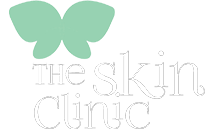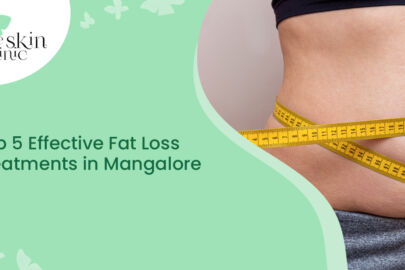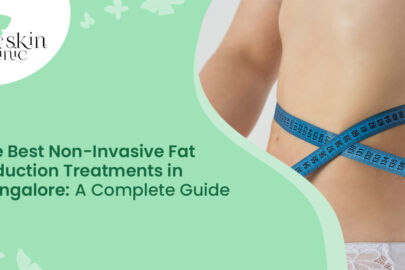Does sagging skin affect your self-esteem? You don’t have to worry about it anymore! We’ve got the perfect solutions to help you regain your confidence and reveal your natural beauty.
As we age, our skin’s natural elasticity begins to fade, leaving us with loose, crepey skin that can make us look older than we feel.
But before you consider surgery, consider this: two non-invasive technologies, radiofrequency skin tightening and ultrasound skin tightening, are changing the game. Both promise to lift, firm, and rejuvenate your skin, but which one is right for you?
To understand the key differences, let’s explore this guide and learn how these two popular treatments help you choose the right option for your skin.
What is Radiofrequency Skin Tightening?
Radiofrequency Skin Tightening uses electrical energy to heat the deep layers of your skin, stimulating collagen production and causing the skin to contract.
This contraction gives the skin a more lifted and firmer appearance. Radiofrequency Skin Tightening is a popular choice among those looking to reduce fine lines, wrinkles, and sagging skin.
Radiofrequency Skin Tightening is a Great Option for Patients Who:
- Have moderate to severe skin laxity (sagging skin)
- Want to treat deeper wrinkles and folds
- Have more pronounced facial sagging
- Are looking for a treatment that can provide more dramatic results
- Can tolerate heat-based treatments
- Want to treat deeper skin concerns such as:
Deep wrinkles and folds
Significant facial sagging
Neck and décolletage laxity with more pronounced skin folds
For more information on skin tightening treatments, read our guide on The Role of Microcurrent Therapy for Skin Tightening for Face in Mangalore [Benefits and Considerations]
What is Ultrasound Skin Tightening?
Ultrasound Skin Tightening, on the other hand, uses high-frequency sound waves to stimulate collagen production and improve skin elasticity.
This non-invasive treatment is often used to lift and firm the skin, reducing the appearance of fine lines, wrinkles, and sagging skin.
Ultrasound Skin Tightening is a Great Option for Patients Who:
- Have mild to moderate skin laxity (sagging skin)
- Want to improve skin texture and tone
- Have fine lines and wrinkles
- Are looking for a non-invasive treatment with minimal downtime
- Have sensitive skin and may not tolerate heat-based treatments well
- Want to treat superficial skin concerns such as:
Mild facial sagging
Neck and décolletage laxity
Shallow wrinkles and fine lines
Related blog: Choosing the Right Anti-Aging Clinic in Mangalore: A Comprehensive Guide.
Key Differences Between Radiofrequency and Ultrasound Skin Tightening
While both treatments aim to improve skin elasticity and reduce signs of aging, there are some key differences to consider:
- Depth of Penetration: Radiofrequency Skin Tightening can penetrate deeper into the skin, making it more effective for treating deeper wrinkles and sagging skin. Ultrasound Skin Tightening, on the other hand, is better suited for treating superficial skin concerns.
- Treatment Time: Radiofrequency Skin Tightening treatments typically take longer than Ultrasound Skin Tightening treatments.
- Discomfort Level: Some people may find Radiofrequency Skin Tightening treatments more uncomfortable than Ultrasound Skin Tightening treatments.
Let’s have a more clarity on key differences between two skin treatments with the help of a comparison table:
| Treatment Characteristics | Ultrasound Skin Tightening | Radiofrequency Skin Tightening |
|---|---|---|
| Technology | High-frequency sound waves | Electrical energy (heat-based) |
| Depth of Penetration | Superficial to moderate | Moderate to deep |
| Treatment Time | Typically 30-60 minutes | Typically 60-90 minutes |
| Discomfort Level | Mild | Moderate (some may find it more uncomfortable) |
| Downtime | Minimal (usually none) | Minimal (some redness may occur) |
| Skin Concerns | Mild to moderate skin laxity, fine lines, wrinkles | Moderate to severe skin laxity, deeper wrinkles, folds |
| Skin Types | Suitable for most skin types, including sensitive skin | Suitable for most skin types, but may not be ideal for very sensitive skin |
| Results | Gradual improvement over 2-3 months | More immediate results, with continued improvement over 2-3 months |
| Number of Sessions | Typically 1-3 sessions, spaced 4-6 weeks apart | Typically 1-3 sessions, spaced 4-6 weeks apart |
| Cost Effectiveness | Generally considered more cost-effective | May be more expensive, especially for multiple sessions |
Which Skin Tightening Treatment to Choose?
Both Radiofrequency Skin Tightening and Ultrasound Skin Tightening are effective non-invasive treatments for improving skin elasticity and reducing signs of aging.
By understanding the key differences between these two treatments, you can make an informed decision about which one is right for you.
Consult a Lady Skin Specialist at The Skin Clinic to determine the best course of treatment for your individual skin concerns.
Schedule Your Appointment Now!
Frequently Asked Questions (FAQs)
1. What is Ultrasound Skin Tightening?
Ultrasound Skin Tightening uses high-frequency sound waves to stimulate collagen production and improve skin elasticity.
2. How does Radiofrequency Skin Tightening work?
Radiofrequency Skin Tightening uses electrical energy to heat the deep layers of the skin, stimulating collagen production and causing the skin to contract.
3. Are both treatments painful?
Both treatments are generally well-tolerated, with some patients experiencing mild discomfort during the procedure.
4. How many sessions are needed for optimal results?
Typically 1-3 sessions, spaced 4-6 weeks apart, are needed for optimal results with both Ultrasound and Radiofrequency Skin Tightening treatments.
5. Are the results permanent?
While both treatments can provide long-lasting results, maintenance sessions may be needed to maintain optimal results, as skin aging is a continuous process.




